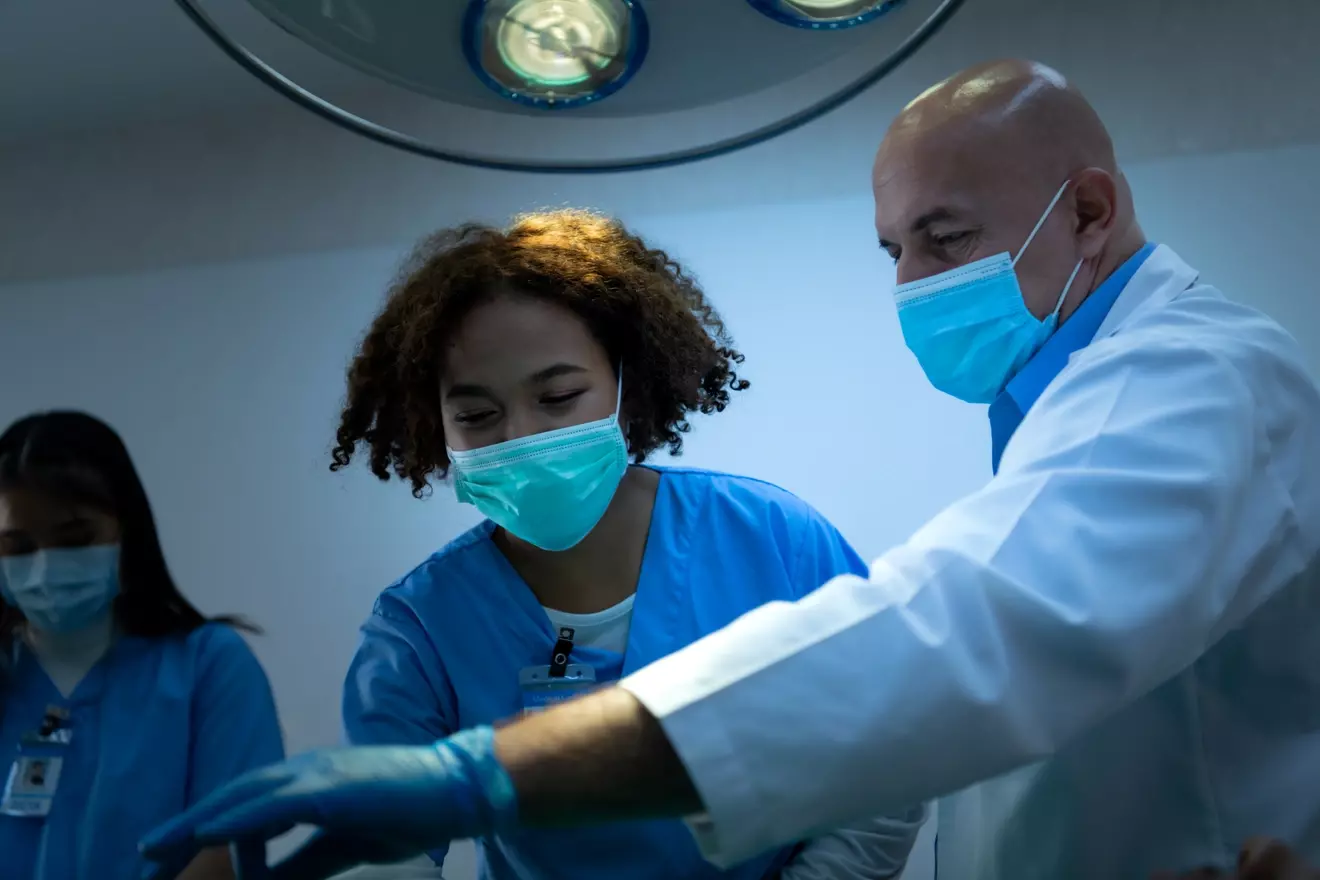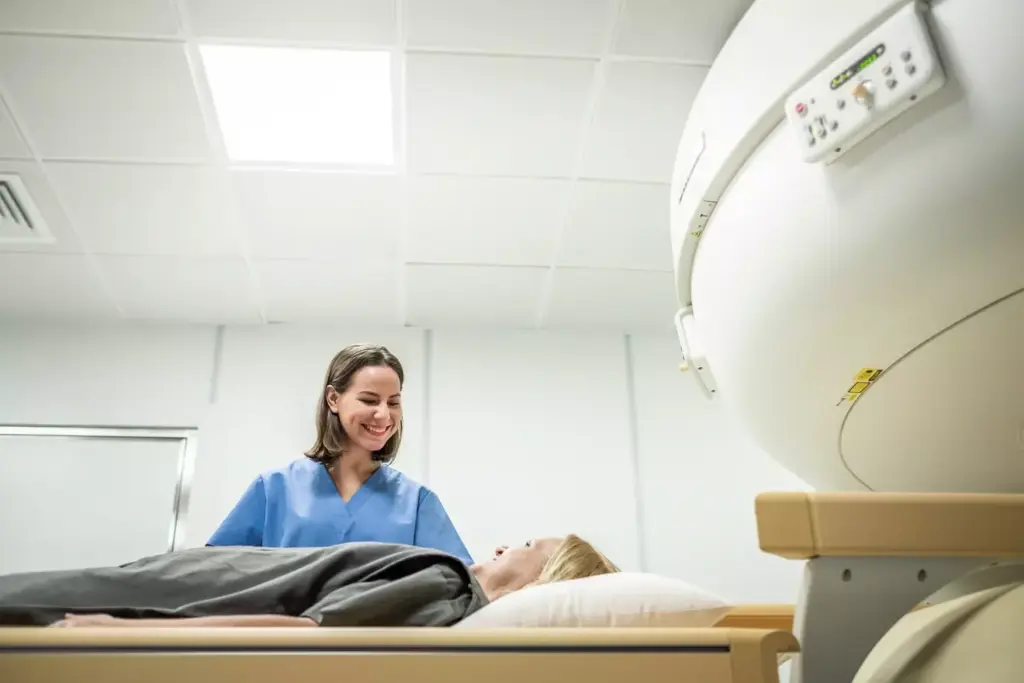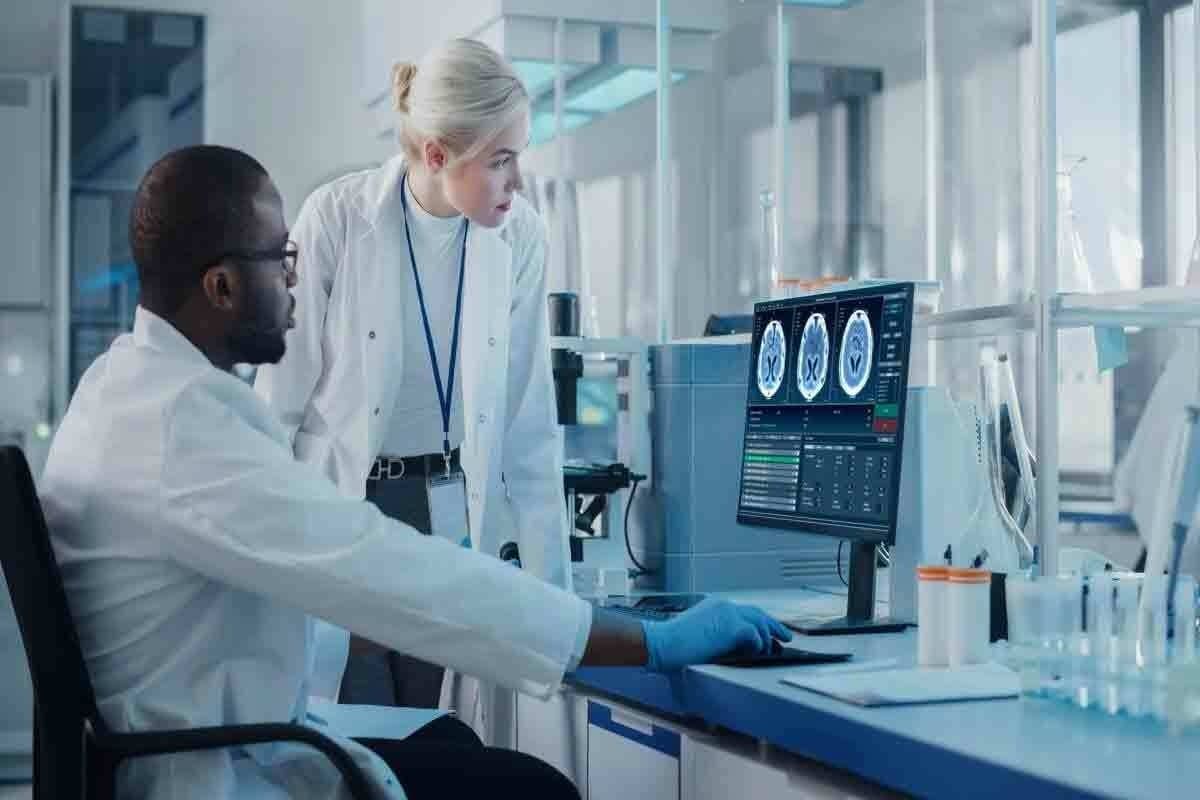Last Updated on November 27, 2025 by Bilal Hasdemir

We are seeing a big leap in CAR T-cell therapy. It’s a new way to treat cancer by changing a patient’s white blood cells. This method has shown great hope in fighting cancers like leukemia, lymphoma, and multiple myeloma.
Key Takeaways
- CAR T-cell therapy is a groundbreaking immunotherapy that modifies white blood cells to fight cancer.
- It has shown high remission rates in certain types of cancer, including leukemia and lymphoma.
- The therapy involves genetically modifying T cells to recognize and attack cancer cells.
- Side effects can include severe reactions such as cytokine release syndrome (CRS) and neurotoxicity.
- Ongoing research is focused on managing side effects and expanding its applications.
What Is CAR T-Cell Therapy: A Breakthrough in Cancer Treatment
CAR T-Cell Therapy is a new way to fight cancer. It uses the body’s immune system to attack cancer cells. This method has shown great promise, mainly for blood cancers.
Immunotherapy is changing how we treat cancer. CAR T-Cell Therapy is leading this change. It’s a new way to fight cancer.
The Evolution of Immunotherapy in Cancer Care
Immunotherapy has grown a lot in the last few decades. It started with basic immune stimulation and now includes targeted therapies. CAR T-Cell Therapy is a big step forward, making T cells attack cancer cells.
Genetic engineering and understanding the immune system have helped create CAR T-Cell Therapy. It’s been very effective against some blood cancers. It gives hope to patients who have tried other treatments.
How CAR T-Cell Therapy Differs from Traditional Treatments
CAR T-Cell Therapy is different from old treatments like chemotherapy. It’s more focused, using the patient’s T cells to target cancer. This method is less likely to harm healthy cells.
The table below shows how CAR T-Cell Therapy differs from traditional treatments.
| Treatment Aspect | CAR T-Cell Therapy | Traditional Cancer Treatments |
|---|---|---|
| Treatment Targeting | Targets specific cancer cells | Affects both cancerous and healthy cells |
| Treatment Approach | Personalized, using patient’s own T cells | Often one-size-fits-all approach |
| Side Effects | Can have unique side effects like CRS, but generally fewer long-term effects | Can have broad and severe side effects |
CAR T-Cell Therapy is a big step forward in cancer treatment. It offers a new hope for patients with certain cancers. As research keeps improving, we’ll see even more benefits from this therapy.
How T Cell Cancer Treatment Works: The Science Behind CAR-T
CAR T-cell therapy changes a patient’s T cells to fight cancer. It’s a new way to treat cancer, showing great promise. It works best on cancers that don’t respond to usual treatments.
The Process of Engineering T Cells
The journey starts with taking T cells from the patient’s blood. T cell engineering makes these cells special. They get a new part that lets them find and kill cancer cells.
First, the T cells are taken to a lab. There, they get a new gene that helps them find cancer. Then, they grow more to make enough for treatment. This takes a few weeks, and the patient might get other treatments too.
How Modified White Blood Cells Target Cancer Cells
The T cells with the new gene are put back into the patient. These modified white blood cells find and kill cancer cells. This way, they don’t harm healthy cells as much.
These cells keep growing and watching for cancer. This is why CAR T-cell therapy can keep working for a long time. It offers hope for lasting remission in some cancers.
Even with its success, CAR T-cell therapy has side effects. These can include problems like cytokine release syndrome (CRS) and neurotoxicity. It’s important to watch for these and help manage them.
The CAR T-Cell Therapy Process: From Collection to Infusion
CAR T-cell therapy is a detailed process with several key steps. It starts with collecting T cells and ends with infusing them back into the body. We’ll explain each step to help patients understand what to expect.
T Cell Collection and Engineering Phase
The first step is collecting T cells from the patient’s blood. This is done through leukapheresis, a process that filters the blood to get the T cells. These T cells are then sent to a lab for genetic changes.
In the lab, the T cells are made to recognize and attack cancer cells better. This is thanks to a genetic modification that makes them more effective. This is what makes CAR T-cell therapy so powerful.
After the T cells are engineered, they are grown in the lab to make enough for treatment. This takes a few weeks. During this time, the patient might get other treatments to manage their cancer.
| Step | Description | Duration |
|---|---|---|
| T Cell Collection | Leukapheresis to isolate T cells from the patient’s blood | 1-2 days |
| Genetic Modification | Engineering T cells to produce CAR | 2-4 weeks |
| T Cell Expansion | Multiplying engineered T cells | 2-4 weeks |
| Infusion | Administering CAR T cells back to the patient | 1 day |
The CAR T-Cell Infusion Procedure
When the CAR T cells are ready, they are given back to the patient. This is done through an IV line, similar to a blood transfusion. The whole process takes about 30 minutes to an hour.
After the infusion, patients are watched closely for any immediate reactions. One possible side effect is cytokine release syndrome (CRS). We’ll talk more about managing side effects later.
The CAR T-cell therapy process is complex and tailored to each patient. Knowing the steps from start to finish helps patients prepare for this innovative cancer treatment.
Types of Cancer Responsive to CAR T-Cell Therapy
CAR T-cell therapy is changing how we fight cancer. It’s making big strides in treating certain cancers. This shift is most notable in blood cancers.
Blood Cancers: Leukemia, Lymphoma, and Multiple Myeloma
CAR T-cell therapy is very effective against blood cancers. Leukemia, lymphoma, and multiple myeloma are cancers that respond well to this treatment.
- Acute Lymphoblastic Leukemia (ALL): CAR T-cell therapy has high remission rates in patients with relapsed or refractory ALL.
- Diffuse Large B-Cell Lymphoma (DLBCL): This aggressive lymphoma shows significant response to CAR T-cell treatment, giving hope to those who didn’t respond to other therapies.
- Multiple Myeloma: CAR T-cell therapy is being explored as a treatment for multiple myeloma, with early results looking promising.
Recent studies show CAR T-cell therapy can induce complete remissions in many patients with these blood cancers. For example, a study on patients with relapsed or refractory DLBCL found a complete remission rate over 50% after CAR T-cell infusion.
Promising Research on Solid Tumors
While CAR T-cell therapy has been more successful with blood cancers, researchers are also exploring its use for solid tumors. Solid tumors, like breast, lung, and pancreatic cancer, are harder to treat because of their complex environment.
“The field of CAR T-cell therapy is rapidly evolving, with ongoing research aimed at overcoming the hurdles associated with treating solid tumors. We’re making progress in understanding how to enhance the efficacy of CAR T cells in these challenging cancers.”
To improve CAR T-cell therapy for solid tumors, researchers are looking into several strategies. These include:
- Combining CAR T-cell therapy with checkpoint inhibitors to boost anti-tumor activity.
- Engineering CAR T cells to target specific antigens on solid tumor cells.
- Developing ways to overcome the immunosuppressive tumor microenvironment.
As research keeps advancing, we’re hopeful about CAR T-cell therapy’s future. We’re optimistic it will help treat more types of cancer, including solid tumors.
Effectiveness and Success Rates of CAR-T Therapy
CAR T-Cell therapy has made a big impact in fighting cancer. It has shown great success in treating different types of cancer. This new treatment gives hope to patients all over the world.
This therapy is known for its high remission rates in some cancers. Research shows that it can help 50% to 90% of patients. This shows its great promise.
Remission Rates Across Different Cancer Types
CAR T-Cell therapy has shown great results in fighting blood cancers. For example, it has helped up to 50% of patients with a certain type of lymphoma get better completely.
| Cancer Type | Remission Rate | Study |
|---|---|---|
| Diffuse Large B-Cell Lymphoma | 50% | ZUMA-1 |
| Acute Lymphoblastic Leukemia | 80-90% | CTL019 |
| Multiple Myeloma | 70-80% | CARTITUDE-1 |
The table shows how CAR T-Cell therapy works for different cancers. It shows the therapy’s wide range of effectiveness.
Long-term Outcomes and Survival Statistics
CAR T-Cell therapy also offers long-term benefits. Many patients who get better stay that way for a long time.
Long-term follow-up data from trials show promising results. For example, some patients with leukemia can stay disease-free for up to 40% of the time.
As research keeps going, CAR T-Cell therapy will likely get even better. It might help more people with cancer in the future.
Common Side Effects of CAR T Cell Therapy
CAR T-Cell therapy offers hope for cancer patients. But, it also has side effects that need attention. Understanding these risks and how to manage them is key.
Cytokine Release Syndrome: Symptoms and Management
Cytokine Release Syndrome (CRS) is a major side effect of CAR T-Cell therapy. It happens when the T cells release a lot of cytokines into the blood. Symptoms can be mild or severe, like fever, nausea, and headache. In bad cases, it can affect organs.
Managing CRS means watching patients closely for early signs. Doctors use medicines like tocilizumab to help.
Neurotoxicity Concerns and Monitoring
Neurotoxicity is another side effect. It can cause confusion, memory loss, or even seizures. The exact cause is being studied, but it’s thought to be due to brain inflammation from CAR T cells.
Checking for neurotoxicity is important. Doctors do regular brain checks. If it’s found, they might use corticosteroids to reduce inflammation.
Infection Risks and Immune System Recovery
Patients getting CAR T-Cell therapy face higher infection risks. This is because the treatment weakens the immune system. The risk is highest right after the infusion.
To lower this risk, patients get antibiotics before treatment. Their immune systems are also watched closely. It takes time for the immune system to recover. Patients are told how to avoid infections during this time.
| Side Effect | Symptoms | Management |
|---|---|---|
| Cytokine Release Syndrome | Fever, nausea, headache, organ dysfunction | Tocilizumab, close monitoring |
| Neurotoxicity | Confusion, memory loss, seizures, cerebral edema | Corticosteroids, neurological assessments |
| Infection Risks | Varying symptoms depending on the infection site | Prophylactic antibiotics, immune system monitoring |
Patient Monitoring and Management During CAR-T Treatment
Keeping an eye on patients getting CAR T-cell therapy is key for their safety and success. We watch them closely to handle any side effects and aim for the best results.
The Critical First Two Weeks Post-Treatment
The first two weeks after getting CAR T-cell therapy are very important. During this time, patients might face serious side effects like Cytokine Release Syndrome (CRS) and neurotoxicity. We look out for symptoms like fever, nausea, and headaches. In severe cases, they might have confusion or trouble speaking.
To keep these risks in check, we have a strict monitoring plan. We do regular blood tests to watch for CRS and other issues. We also check their brain function often.
Long-term Follow-up Protocol
After the first two weeks, we keep watching patients to see how long their treatment works and handle any late side effects. This ongoing care is key to catching problems early, like infections or signs of cancer coming back.
Our long-term care plan includes regular visits and tests. How often we see patients depends on how they’re doing and how they react to treatment.
| Follow-up Care | Frequency | Purpose |
|---|---|---|
| Regular Check-ups | Monthly for the first 6 months | Monitor for signs of relapse or infection |
| Blood Tests | Every 2 weeks for the first 3 months | Assess immune recovery and detect possible complications |
| Imaging Studies | As needed based on clinical assessment | Check disease status and treatment response |
With a detailed monitoring and follow-up plan, we can make sure patients get the best from CAR T-cell therapy.
Accessibility and Regulatory Changes in CAR T-Cell Therapy
In recent years, CAR T-cell therapy has become more accessible to patients globally. This treatment has shown great promise in fighting cancer. Efforts to make it available to more people have grown stronger.
Recent Regulatory Developments Improving Patient Access
Regulatory bodies are making it easier for more people to get CAR T-cell therapy. They have approved new treatments and made more patients eligible.
Key regulatory changes include: faster approval for new CAR T-cell therapies and more uses for existing ones.
There’s also more money going into making CAR T-cell therapy available.
Conclusion: The Future of CAR T-Cell Therapy in Cancer Care
CAR T-cell therapy is a big step forward in fighting cancer. It gives hope to those with blood cancers. This method uses immunotherapy to help patients who haven’t responded to other treatments.
The process of giving CAR T-cell therapy is complex but getting better. As research grows, we’ll see more ways to use it. It will also help more cancer types and reduce side effects.
The future of CAR T-cell therapy is bright. It will keep being a key part of cancer treatment. We’re excited to see how it will help more patients. We’re here to keep you updated and supported in your fight against cancer.
What is CAR T-cell therapy?
CAR T-cell therapy is a new way to fight cancer. It changes a patient’s T cells to find and kill cancer cells.
How does CAR T-cell therapy work?
First, T cells are taken from the patient. Then, they are made to find cancer cells. After that, these T cells are put back into the patient.
What types of cancer can be treated with CAR T-cell therapy?
It works well on blood cancers like leukemia and lymphoma. It’s also being tested on solid tumors.
What are the common side effects of CAR T-cell therapy?
Side effects include cytokine release syndrome and neurotoxicity. There’s also a risk of infections. These can be managed with care.
How is cytokine release syndrome managed?
It’s treated with drugs that lower inflammation. Patients also get supportive care to help with symptoms.
What is the success rate of CAR T-cell therapy?
It has a success rate of 50-90% for different cancers. Long-term survival looks promising.
What is the CAR T-cell infusion procedure like?
The procedure involves putting the engineered T cells into a vein. It’s done in a hospital with close monitoring for side effects.
How are patients monitored during and after CAR T-cell therapy?
Patients are watched closely for the first two weeks after treatment. They also have long-term follow-ups to manage side effects and ensure safety.
What is the future of CAR T-cell therapy in cancer care?
The future looks bright. Researchers are working to make it more effective and reduce side effects. They also aim to use it for more cancers.
Are there any recent regulatory developments improving patient access to CAR T-cell therapy?
Yes, recent changes have made it easier for patients to get this therapy. This includes new approvals and better manufacturing processes.
What are the long-term outcomes of CAR T-cell therapy?
Long-term results show sustained remissions and better survival rates. Some patients stay cancer-free for a long time.
References
-
- The Harvard Gazette. Unlocking the promise of CAR T. https://news.harvard.edu/gazette/story/2025/06/unlocking-the-promise-of-car-t/
- ecancer. ASCO 2025: Dual‑target CAR T‑cell therapy slows growth of aggressive brain cancer. https://ecancer.org/en/news/26551-asco-2025-dual-target-car-t-cell-therapy-slows-growth-of-aggressive-brain-cancer
- Fieldhouse R. Cancer‑fighting CAR T cells show promising results for hard‑to‑treat tumours. Nature. 2025. https://www.nature.com/articles/d41586-025-01722-8 (Nature)








